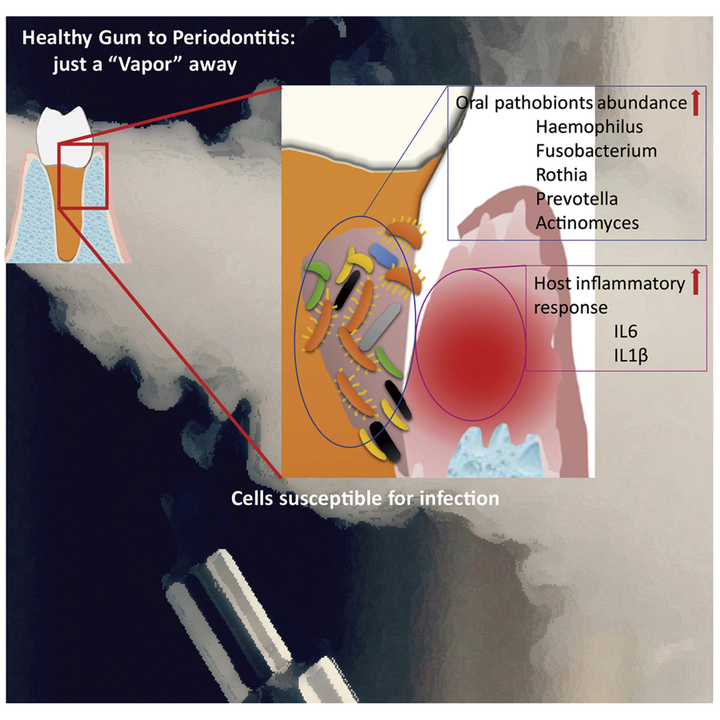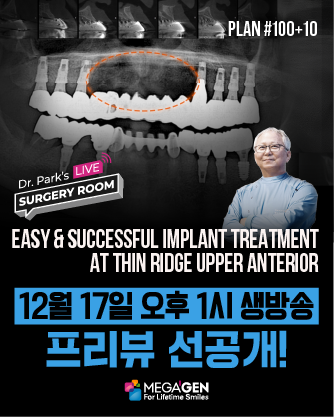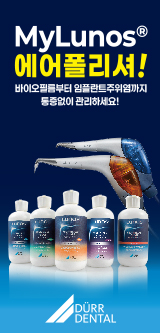
김혜성 이사장(서울치대 졸업, 동대학원 박사)
사과나무의료재단의 이사장이자, 재단 산하 의생명연구소의 미생물 연구자이다.
구강미생물에서 시작해 장내 미생물, 발효 음식의 미생물까지 폭넓게 공부하며 몇 권의 책을 냈고 논문을 발표했다.
『미생물과의 공존』 『입속에서 시작하는 미생물이야기』 『미생물과 공존하는 나는 통생명체다』등 3권이 과학기술부 선정 우수과학도서를 수상했다.
담배를 피우면 머리가 핑 돕니다. 뇌로 가는 혈류가 줄어드는 거겠죠. 실제 흡연 후에 손가락의 혈류를 재어 보았더니, 약 30% 가량 감소했다고 합니다.(Petschke, Engelhardt et al. 2006)
또 흡연자들과 비흡연자들의 최대 산소호흡량(VO2max)을 비교해 보아도 흡연자들의 호흡량이 무려 40% 가량 떨어지고, 간접흡연자들도 거의 비슷한 정도로 최대 산소호흡량이 떨어진다는 것을 보여줍니다. (de Borba, Jost et al. 2014)
우리 몸의 가장 중요한 메신저인 피와 산소의 흐름이 감소한다는 것만으로도 흡연이 어떤 영향을 줄 것인가가 분명해집니다. 그런 걱정들이 담뱃갑 표면의 징그러운 구강암 사진으로 표현되었겠지요.
몸에서 흡연이 이뤄지는 직접적 공간인 구강을 진료하는 치과의사나 치과위생사만큼 흡연자의 건강에 밀접한 직업은 없을 겁니다.
개인적으로 전 담배 냄새를 너무 싫어해서 흡연자들의 진료가 참 힘듭니다. 흡연자들을 진료하고 나면, 머리가 지끈지끈 아프기 일쑤입니다. 그런 환자들의 구강관리를 치과위생사에게 부탁할 때도, 스케일링을 하는 2~30분 동안 그 냄새를 맡을 생각을 하면, 참 미안하고 민망하기도 합니다.
수술 후에도 담배를 못 참아 피는 바람에 수술부위의 치유가 지연되어 치료결과가 나빠 곤욕을 치르기도 하고요.
흡연자들의 구강상태가 좋지 않음은 익히 알려져 있습니다. 대표적으로 치주염, 구강암이겠죠. 작년에 발표된 부산대 연구를 보아도, 우리나라 중년층의 치아상실에 가장 영향이 큰 요소가 흡연입니다.(Lee, Yi et al. 2019)
흡연자의 구강에 남아 있는 치아의 개수가 비흡연자에 비해 절반도 안 되는 0.462개밖에 되지 않습니다. 구강건강에 영향이 큰 것으로 알려진 경제적 상태나 교육연한은 물론 하루 칫솔질 횟수나 정기적 치과방문 여부 보다 강력한 요소인 것이 인상적입니다.
흡연자들의 치아상실은, 담배 속 니코틴에 직접 자극받는 치주조직의 혈류를 감소시켜 숙주의 방어능력을 떨어뜨려 생기는 불가피한 현상일 겁니다.
흡연은 당연히 구강미생물에도 영향을 줍니다. 1000명이 넘는 미국인들을 대상으로 흡연자와 비흡연자의 구강미생물을 비교해 보았더니, 흡연자들의 구강에는 문(phylum) 수준으로 보자면, 프로티오박테리아(Proteobacteria)가 더 적은데 반해, 속(genus) 수준으로 보아도 연쇄상구균(Streptococcus)이 더 많습니다.(Wu, Peters et al. 2016)
이런 변화가 직접적인 질병을 가져온다고 바로 말할 수 없지만, 이는 마치 지구의 온난화가 진행되면 거기 사는 생태계가 달라지듯이, 흡연에 의해 우리 구강의 환경이 변하면서 미생물의 종류가 변화한다는 것을 의미할 겁니다. 이를 미생물총의 변화(dysbiosis) 라 하는데, 이런 한 공간 전체의 미생물 군집의 변화가 질병의 전조라는 걱정은 갈수록 증가하고 있습니다. (Petersen and Round 2014)

요새 주위에서 많이 피는 전자담배 역시 좋지 않음은 당연합니다. 최근의 한 연구는, 전자담배 피는 사람들 역시 구강에서 푸조박테리움 같은 병원균이 증가하고, 치주조직 안에는 IL-6 and IL-1β 같은 염증성 사이토카인이 증가함을 보여줍니다.(Pushalkar, Paul et al. 2020)
다만, 연초를 태우는 보통의 담배와 글리세롤을 포함한 에어로졸의 전자담배는 그 원리상 질병을 만드는 메커니즘이 조금 다를 수 있을 겁니다. 그렇더라도, 전자담배를 피는 환자들의 구강 역시 늘 감염의 위험이 높아지지 않을 수 없다는 겁니다.
이런 이유로, 치과계는 일찍부터 금연운동에 참여해 왔습니다. 바라건대, 금연운동에 대한 치과계 참여의 폭과 깊이가 더해지면 좋겠습니다. 2019년 발간된 Lancet의 Oral Health 특집에서는, 지금의 치과진료가 너무 치료 중심이고, 개입 중심이라며, 좀 더 포괄적인 보건활동에 나설 필요성을 제기합니다.(Davies 2019, Peres, Macpherson et al. 2019)
좀 더 구체적으론, 금연운동이나 설탕저감운동 같은 예도 제시하고요. 백해무익인 담배가 전신적으로 주는 영향이 크지만, 제일 밀접한 사람들은 치과계이고, 설탕역시 비만과 당뇨를 가져오지만 또한 충치와 잇몸병을 가져올 테니 그 조언이 적합해 보인다는 생각을 했었습니다.
공중보건상의 금연운동만이 아니라 일선 진료실에서도 2015년 금연상담이 건강보험에 도입되면서 금연상담을 해 왔습니다. 하지만, 최근 들어 전체 금연시도에서 의료기관에서 상담 및 처방을 받아 행하는 비율이 줄어들고 있습니다.
실제 저희 병원도 금연상담을 하고 있지만, 최근 그 수가 줄고 있기도 합니다. 이렇게 일선 진료실에서 금연상담의 동력이 약화되고 있는 데는 여러 이유가 있겠지만, 치과의사들의 관심과 그를 향한 경제적 인센티브의 부족이 한 자리 차지할 겁니다.
외부적으론, 그런 정책의 필요성을 제기하되, 내부적으론 금연과 스케일링, 구강위생관리를 연계한 프로그램의 구성도 시도해 볼만 하다고 봅니다. 또 구강위생관리의 중요한 파트너인 치과위생사가 금연상담을 행할 수 있는 폭을 넓히는 것도 필요하지 않을까 싶습니다.
다행인 것은 흡연자가 담배를 끊으면, 구강미생물은 상당한 복원력을 발휘한다는 겁니다. 앞서 인용한 미국인들의 조사에 의하면, 과거에 담배를 피웠더라도 현재 끊은 사람들의 구강미생물은 과거에 전혀 담배를 피운 경험이 없는 사람들과 그다지 다르지 않음을 보여줍니다.(Wu, Peters et al. 2016)
임상적으로도 현재 흡연자보다 과거엔 피웠지만 현재는 끊은 사람들의 구강상태가 더 좋음은 물론입니다.
옛말에, 아쉬운 자가 멍석을 먼저 깐다는 말이 있습니다. 치과는 환자들로 보나 진료진으로 보나, 흡연에 대해 가장 아쉬운 자들일 것입니다. 이 아쉬움을 바탕으로 Lancet의 권고대로 국민건강을 위한 보건활동을 해 보면 어떨까요? 금연을 포함한 구강보건은 가장 중요한 국민보건 활동일 테니까요.
Davies, R. J. T. L. (2019). "Richard Watt: time to tackle oral diseases." 394(10194): 209.
de Borba, A. T., et al. (2014). "The influence of active and passive smoking on the cardiorespiratory fitness of adults." 9(1): 34.
Lee, J.-H., et al. (2019). "Factors Related to the Number of Existing Teeth among Korean Adults Aged 55-79 Years." International journal of environmental research and public health 16(20): 3927.
This study aimed to determine the association between the number of existing teeth (NET) and socioeconomic status (SES), oral health-related behaviours, and metabolic syndrome in Korean adults aged 55-79 years. The study included 3255 adults who underwent oral health examinations and answered questionnaires regarding SES, oral health-related behaviours, and metabolic diseases in the Sixth Korea National Health and Nutrition Examination Survey (2013-2015). The dependent variable was the binary status based on the median NET in each age group. The independent variables were based on SES, oral health-related behaviours, and the presence of metabolic syndrome. The study findings showed that the factors associated with the NET were sex, household income, education level, region of residence, daily toothbrushing frequency, dental visit within 1 year, smoking, and metabolic syndrome. NET was lower in males (adjusted OR: 0.74), in low household income group (adjusted OR: 0.77), in primary school graduates (adjusted OR: 0.53), in rural residents (adjusted OR: 0.78), and in medicaid beneficiaries (adjusted OR: 0.78). The interventions aimed at preserving existing teeth in elderly population should consider their SES, oral health-related behaviours, and metabolic syndrome and overhauling current oral healthcare system and redefining the roles of oral health professionals.
Peres, M. A., et al. (2019). "Oral diseases: a global public health challenge." 394(10194): 249-260.
Petersen, C. and J. L. Round (2014). "Defining dysbiosis and its influence on host immunity and disease." Cellular microbiology 16(7): 1024-1033.
Petschke, F. T., et al. (2006). "[Effect of cigarette smoking on skin perfusion of the hand]." Chirurg 77(11): 1022-1026.
BACKGROUND: Cigarette consumption leads to postoperative wound healing disturbances by impairing skin circulation. MATERIALS AND METHODS: Fourteen nonsmokers and 44 smokers were investigated and classified according to age (<40 and >40 years) and duration of cigarette consumption. Circulation at the tip of the middle finger was measured in both groups under standard conditions with laser Doppler imaging. RESULTS: There was a reduction in skin blood circulation of 24% in smokers (young 39%, older 11%, P=0.001) and 30% in nonsmokers (young 35%, older 18%, P=0.019). With longer duration of cigarette consumption, the effect grew weaker (<10 years 25%, 11-30 years 18%, >30 years 15%). There was no correlation between the number of cigarettes consumed per day and impaired circulation. CONCLUSION: Younger subjects react to cigarette consumption with a stronger reduction in circulation. In elective surgery, especially in young smokers we recommend a 6- to 8-week nicotine abstinence prior to surgical intervention.
Pushalkar, S., et al. (2020). "Electronic Cigarette Aerosol Modulates the Oral Microbiome and Increases Risk of Infection." iScience 23(3): 100884.
Summary The trend of e-cigarette use among teens is ever increasing. Here we show the dysbiotic oral microbial ecology in e-cigarette users influencing the local host immune environment compared with non-smoker controls and cigarette smokers. Using 16S rRNA high-throughput sequencing, we evaluated 119 human participants, 40 in each of the three cohorts, and found significantly altered beta-diversity in e-cigarette users (p = 0.006) when compared with never smokers or tobacco cigarette smokers. The abundance of Porphyromonas and Veillonella (p = 0.008) was higher among vapers. Interleukin (IL)-6 and IL-1β were highly elevated in e-cigarette users when compared with non-users. Epithelial cell-exposed e-cigarette aerosols were more susceptible for infection. In vitro infection model of premalignant Leuk-1 and malignant cell lines exposed to e-cigarette aerosol and challenged by Porphyromonas gingivalis and Fusobacterium nucleatum resulted in elevated inflammatory response. Our findings for the first time demonstrate that e-cigarette users are more prone to infection.
Wu, J., et al. (2016). "Cigarette smoking and the oral microbiome in a large study of American adults." The ISME journal 10(10): 2435-2446.
Oral microbiome dysbiosis is associated with oral disease and potentially with systemic diseases; however, the determinants of these microbial imbalances are largely unknown. In a study of 1204 US adults, we assessed the relationship of cigarette smoking with the oral microbiome. 16S rRNA gene sequencing was performed on DNA from oral wash samples, sequences were clustered into operational taxonomic units (OTUs) using QIIME and metagenomic content was inferred using PICRUSt. Overall oral microbiome composition differed between current and non-current (former and never) smokers (P<0.001). Current smokers had lower relative abundance of the phylum Proteobacteria (4.6%) compared with never smokers (11.7%) (false discovery rate q=5.2 × 10−7), with no difference between former and never smokers; the depletion of Proteobacteria in current smokers was also observed at class, genus and OTU levels. Taxa not belonging to Proteobacteria were also associated with smoking: the genera Capnocytophaga, Peptostreptococcus and Leptotrichia were depleted, while Atopobium and Streptococcus were enriched, in current compared with never smokers. Functional analysis from inferred metagenomes showed that bacterial genera depleted by smoking were related to carbohydrate and energy metabolism, and to xenobiotic metabolism. Our findings demonstrate that smoking alters the oral microbiome, potentially leading to shifts in functional pathways with implications for smoking-related diseases.

















